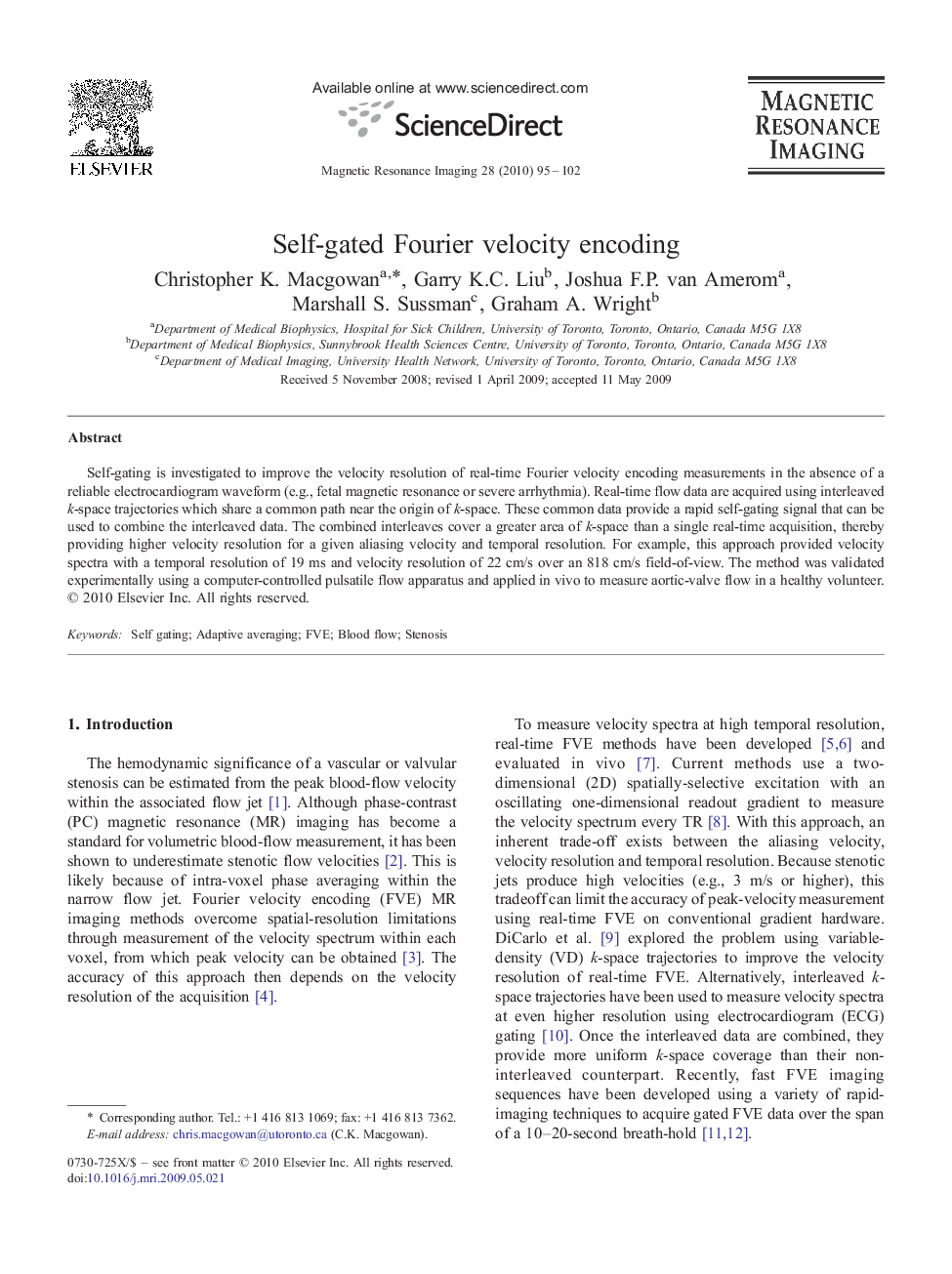| Article ID | Journal | Published Year | Pages | File Type |
|---|---|---|---|---|
| 1806981 | Magnetic Resonance Imaging | 2017 | 8 Pages |
Abstract
Self-gating is investigated to improve the velocity resolution of real-time Fourier velocity encoding measurements in the absence of a reliable electrocardiogram waveform (e.g., fetal magnetic resonance or severe arrhythmia). Real-time flow data are acquired using interleaved k-space trajectories which share a common path near the origin of k-space. These common data provide a rapid self-gating signal that can be used to combine the interleaved data. The combined interleaves cover a greater area of k-space than a single real-time acquisition, thereby providing higher velocity resolution for a given aliasing velocity and temporal resolution. For example, this approach provided velocity spectra with a temporal resolution of 19 ms and velocity resolution of 22 cm/s over an 818 cm/s field-of-view. The method was validated experimentally using a computer-controlled pulsatile flow apparatus and applied in vivo to measure aortic-valve flow in a healthy volunteer.
Keywords
Related Topics
Physical Sciences and Engineering
Physics and Astronomy
Condensed Matter Physics
Authors
Christopher K. Macgowan, Garry K.C. Liu, Joshua F.P. van Amerom, Marshall S. Sussman, Graham A. Wright,
